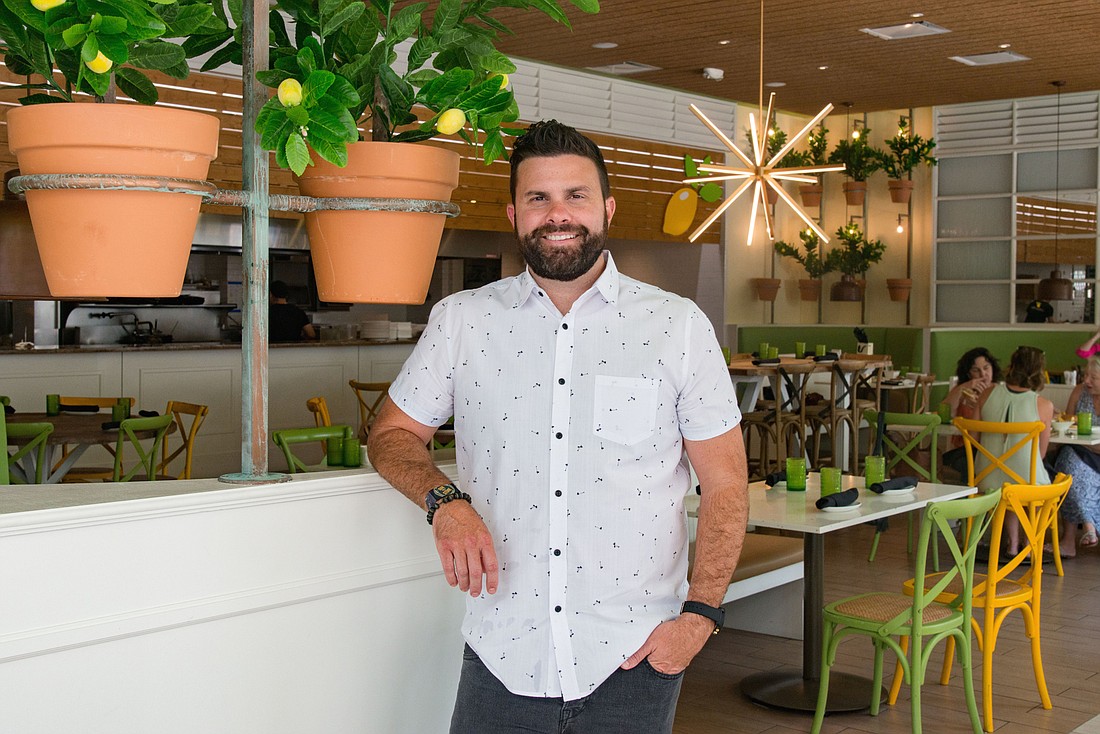- April 1, 2025
-
-
Loading

Loading

Tableseide Restaurant Group has a lot going on.
The list includes:
• In Sarasota’s Southside Village, a refreshed Libby’s restaurant — now Libby’s Neighborhood Brasserie — recently opened;
• Construction on a Libby’s in Lakewood Ranch in east Manatee County has started and is expected to open by August;
• Lemon Tree Kitchen opened in March in downtown Sarasota, replacing the former concept, Louies Modern;
• Two new locations of its craft beer and pizza restaurant Oak & Stone recently opened, one on Clark Road in south Sarasota and one on Central Avenue in St. Petersburg;
• It’s working on a downtown taco project; and, finally,
• It's building a commissary kitchen in Lakewood Ranch.
It does seem like a lot, admits Tableseide CEO Joe Seidensticker. But managing the projects is all about organization, he says.
Taken together, it’s all part of the evolution at Tableseide Restaurant Group, which did $11 million in revenue in 2018. Each of its restaurants now hit different parts of the market, accomplishing the goal of diversification — a necessary element to continue to be profitable and succeed in a challenging industry, Seidensticker says. "We’re more excited by evolving brands,” he adds.
There’s also a somber note to the company’s evolution. Joe’s father, Steve Seidensticker, a charismatic entrepreneur and community leader who ran Tableseide Restaurant Group with his three adult children, died in August after battling cancer. In the wake of the loss, the group has forged ahead with ambitious plans to improve and expand.
“Ultimately, it comes down to numbers. Right now, the goal is to get what we have operating and profitable.” — Joe Seidensticker, CEO, Tableseide Restaurant Group
As the 10-year mark for Libby’s approached, Joe Seidensticker says Tableseide thought about the restaurant’s footprint and how it could be more efficient. “It was just time for an update,” he says. Prior to refreshes, he says, the group sees a trend, typically sales, that drives the decision to revamp. Soon, conversations began with owners of the building, architects and team members about a new concept.
The group had already signed a lease for another Libby’s in Lakewood Ranch, so they decided to work on a new concept that would work for both. “The timing worked out to reinvent the brand,” he says.
At the Southside Village restaurant, there were challenges in construction delays. Seidensticker says they’re moving beyond that. “It took too long, but it is what it is.” In the future, he says he would do more due diligence up front with construction. For now, he’s pleased with the final product. “I’m really happy,” he says. “We want to reenergize the neighborhood.”
One of the biggest lessons learned prior to the Libby’s refresh? “We pigeonholed ourselves,” Seidensticker says. Menu items were often discounted and specials were offered frequently, but the average guest’s spend wasn’t where it should be. To help fix that, Libby’s made its footprint more efficient by decreasing the restaurant’s square footage, taking away 3,000 square feet and turning it into space for another tenant next door. The reduced overhead meant Libby’s could adjust pricing. Overall, menu prices have been lowered 10 to 15%.
Other aspects of the restaurant’s efficiency have been examined, too. Seidensticker says they took a hard look at all of the numbers, including areas such as how many cooks are needed on a Friday night. “We just want to be competitive” — and make quality food, he adds.
Another major recent shift for Tableseide was transforming the former home of Louies Modern into Lemon Tree Kitchen, a restaurant with a healthy twist. It was turned around quickly — in a single week. “We had planned down to the day what we had to accomplish,” Seidensticker says. The group did staff training off-site and made cosmetic changes to the restaurant. “All the bones were there,” he says.
It will take time to know whether the refreshes have been successful, Seidensticker says. “Ultimately, it comes down to numbers,” he says. “Right now, the goal is to get what we have operating and profitable.”
The company’s corporate structure has also evolved. It’s now a three-level model with architects, translators and doers. “Everybody can identify the part of the company they’re in,” he says. Seidensticker is in the architect camp. Decisions and tasks flow from that level to the translator level and then the doer level.
“Communication was always a struggle for the company,” he says, and this model has helped. It’s also been a tool for preventing burnout — a genuine industry anxiety. When employees know the jobs they’re expected to do, they can manage the work, he says. “This way, you’re focused.”